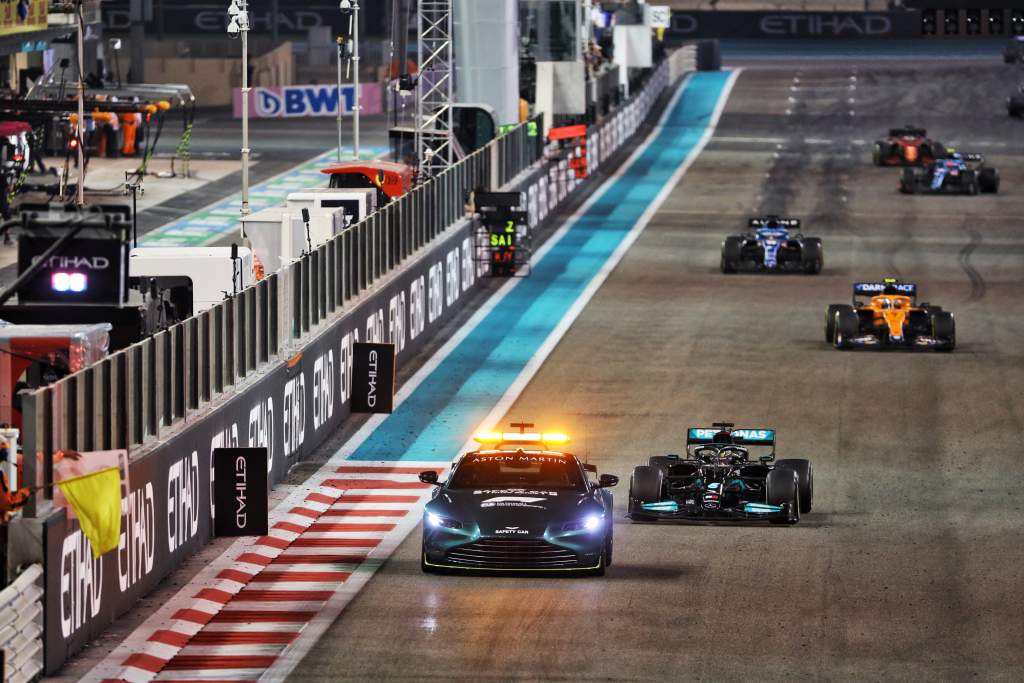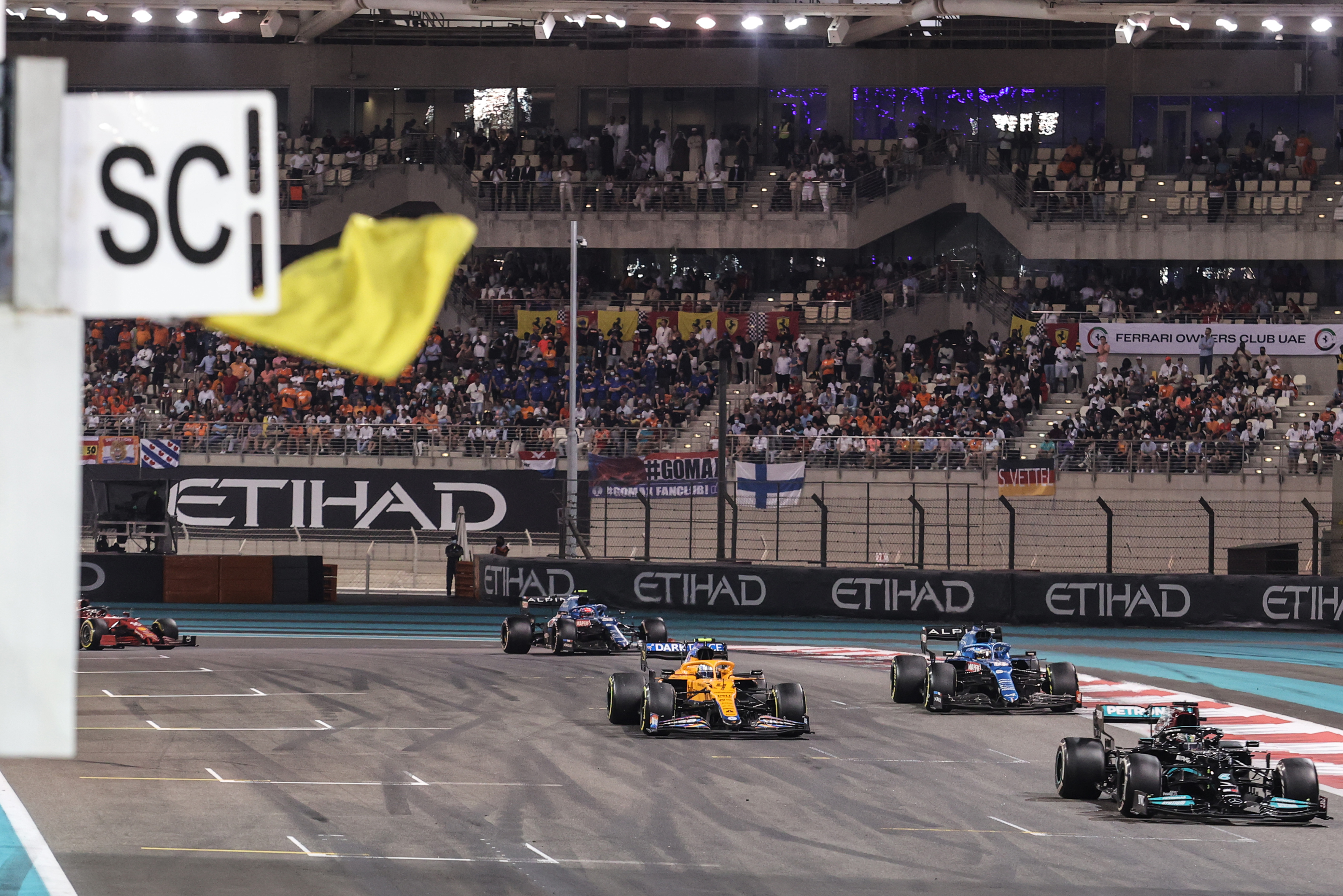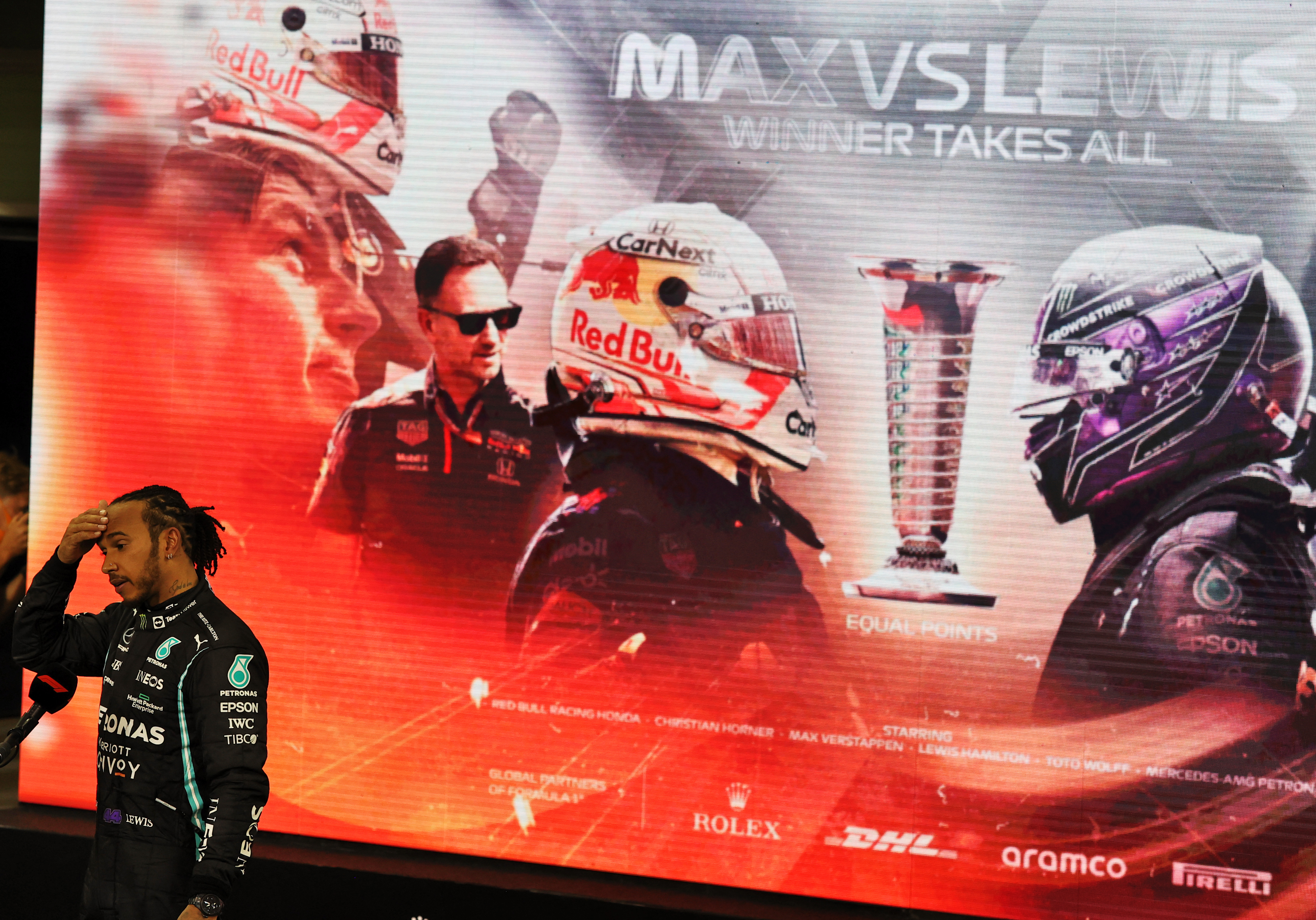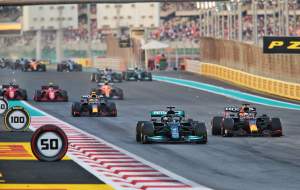The questionable FIA logic a Mercedes appeal may target
Despite throwing out Mercedes’ main protest in the aftermath of Formula 1’s Abu Dhabi Grand Prix, the FIA’s explanation of its controversial handling of the late safety car was hardly conclusive – leaving a gap for Mercedes’ appeal to target

Despite throwing out Mercedes’ main protest in the aftermath of Formula 1’s Abu Dhabi Grand Prix, the FIA’s explanation of its controversial handling of the late safety car was hardly conclusive.
Red Bull’s Max Verstappen grabbed victory and with it the world championship after capitalising on a late safety car and a one-lap restart to overcome Lewis Hamilton with a tyre advantage.
Mercedes alleged there were two breaches of the sporting regulations in how that safety car was handled, though.
Specifically, Mercedes targeted the part of the regulation that states “any cars that have been lapped by the leader will be required to pass the cars on the lead lap and the safety car” and “once the last lapped car has passed the leader the safety car will return to the pits at the end of the following lap”.
Race director Michael Masi allowed only the cars between Verstappen and Hamilton to unlap themselves – not all the cars – then engaged the process outlined in Article 48.13 of the regulations and signalled the safety car immediately into the pits, instead of this happening at the end of the following lap.
Had the sporting regulations been complied with, Mercedes contends Hamilton would have won the race and therefore the world championship.
In explaining why the protest was dismissed, the stewards included this evidence from Masi: “The purpose of Article 48.12 was to remove those lapped cars that would ‘interfere’ in the racing between the leaders.

“The race director also stated that it had long been agreed by all the teams that where possible it was highly desirable for the race to end in a ‘green’ condition (i.e. not under a safety car).”
This establishes that the end goal was to achieve green flag racing on the final lap, with Hamilton and Vertstappen able to race uninterrupted by lapped cars.
The only way to achieve that was to fast-track the process of bringing the safety car into the pits.
The stewards also highlighted another article (Article 15.3) that allows the race director to “control the use of the safety car, which in our determination includes its deployment and withdrawal”.
Incorporating that into the verdict implies Masi’s got the jurisdiction to overrule any specific regulation.
As without fully explaining why, the stewards suggested it was OK Article 48.12 was not “applied fully in relation to the safety car returning to the pits at the end of the following lap” because Article 48.13 “overrides that”.
But there is no obvious mechanism in the rules for that, only the specific instructions that were not precisely followed.
The stewards’ argument is that as soon as the “safety car in this lap” instruction was displayed they had no choice but to complete that process even though Article 48.12 had not been completely fulfilled.
This is consistent with further evidence from Masi, who said that “Article 48.13 was the one that applied in this case”.
It essentially means fulfilling the requirements of that article took precedent. And in simple terms, the reason it’s OK that they didn’t follow one rule is that they applied another, even though that rule is partly controlled by the rule they didn’t apply…

So presumably the argument is that the race director has exercised his authority over the control of the safety car to unilaterally decide one rule does not need to be followed, because hurrying up with applying the process outlined in another rule was the only way to achieve the widely desired end goal of getting the race restarted before it finished.
The question Mercedes still doesn’t have an answer to is whether that is exactly the logic followed and also, if it is, then why is that acceptable?
The stewards have simply declared Article 48.13 “overrides” 48.12 but there is no explanation why, or reference to the mechanism for that. It is just a statement.
Given what’s at stake, it is no surprise that Mercedes has not considered that adequate explanation and is at least pondering the idea of appealing the verdict.



